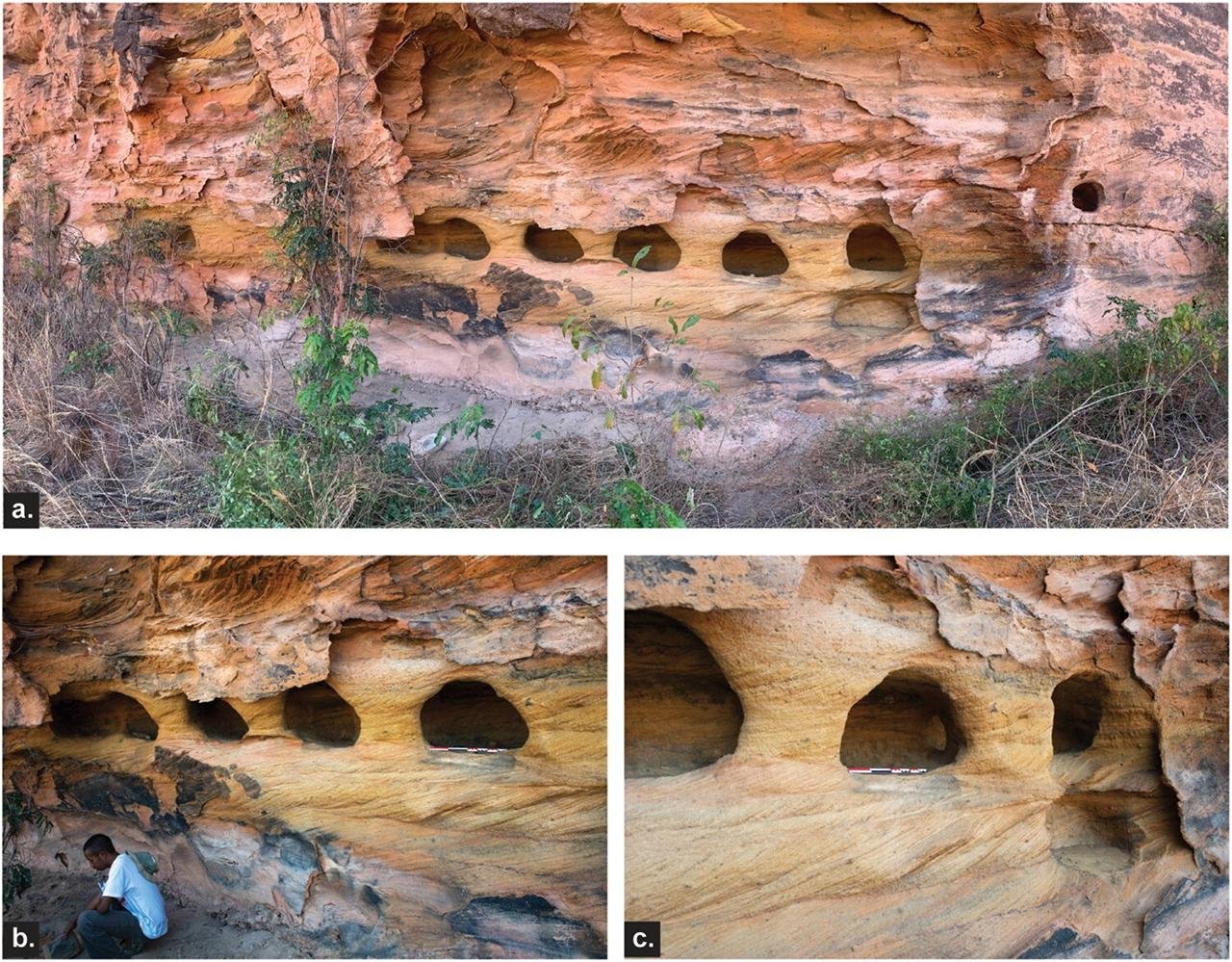Madagascar's enigmatic rock-cut architecture suggests Zoroastrian origins
by Dario Radley September 14, 2024
In the remote Isalo Massif in southern Madagascar, at a site called Teniky, an international team of researchers has uncovered a unique rock-cut architectural complex that has no known parallels on the island or the nearby East African coast. This discovery has prompted speculation about possible links to ancient Zoroastrian communities and long-distance migration and trade networks.

A series of 35 circular rock-cut niches in Madagascar. Credit: G. Schreurs et al. Azania: Archaeological Research in Africa (2024)
The team, led by Guido Schreurs, Associate Professor at the University of Bern’s Institute of Geological Sciences, documented a variety of rock-carved features at Teniky, including artificial terraces, sandstone walls, niches carved into cliffs, and stone basins. These structures were dated using radiocarbon analysis of charcoal found during excavations, which placed their construction between the 10th and 12th centuries CE. This coincides with the discovery of imported ceramics from China and Southeast Asia, which date between the 11th and 14th centuries, suggesting that the inhabitants of Teniky were involved in Indian Ocean trade networks during the medieval period, despite being located over 200 kilometers from the nearest coast.
What makes the Teniky site particularly intriguing is that the closest stylistic parallels to its rock-carved architecture are found not in Africa but in present-day Iran, specifically in the Fars region. These Iranian rock-cut niches are associated with Zoroastrian funerary practices dating back to the first millennium CE. This has led the researchers to propose a tentative hypothesis that Teniky may have been a necropolis constructed by settlers of Zoroastrian origin.

Teniky: rock-cut niches: a) panoramic view of rock-cut niches and a single cylindrical rock-cut niche slightly higher to the right; b and c) detailed views. Credit: G. Schreurs et al. Azania: Archaeological Research in Africa (2024)
If this hypothesis is confirmed, it would raise numerous questions about early migration to Madagascar and the island’s cultural and religious diversity during the medieval period. Dr. Schreurs emphasized the need for further archaeological research to explore these questions: “We need to understand where and when these settlers first arrived on the coast of Madagascar, why they moved inland to Teniky, how they interacted with other populations on the island, and when and why the site was eventually abandoned.”

The researchers have already ruled out the previously held theory that the structures at Teniky were built by shipwrecked Portuguese sailors in the 16th century. Credit: G. Schreurs et al. Azania: Archaeological Research in Africa (2024)
More:
https://archaeologymag.com/2024/09/madagascars-rock-cut-architecture-suggests-zoroastrian-origins/


